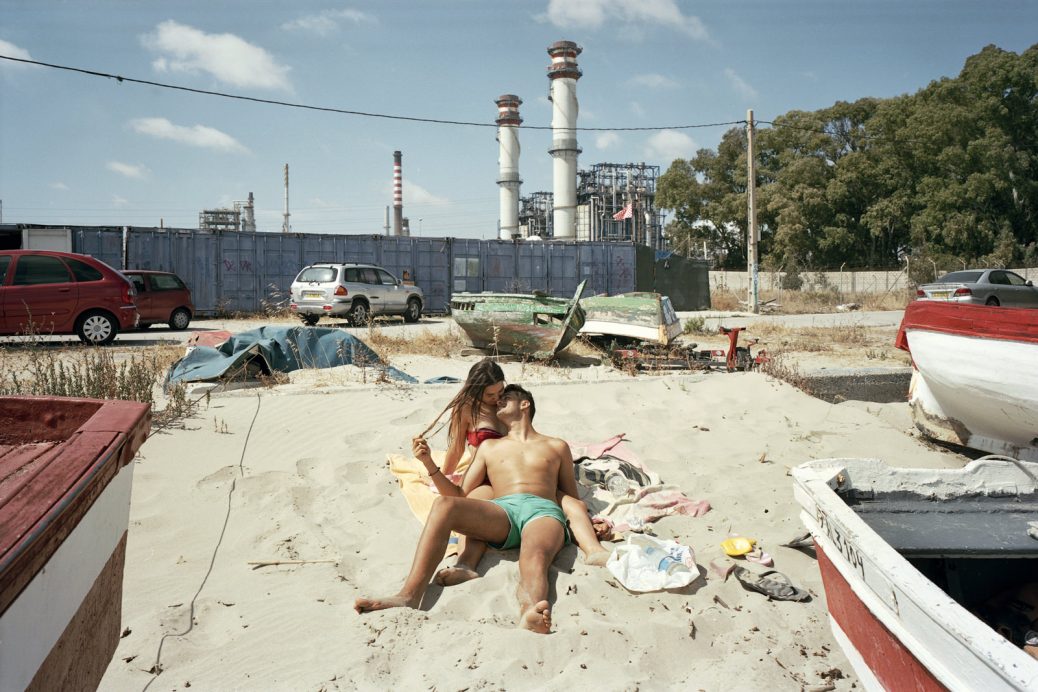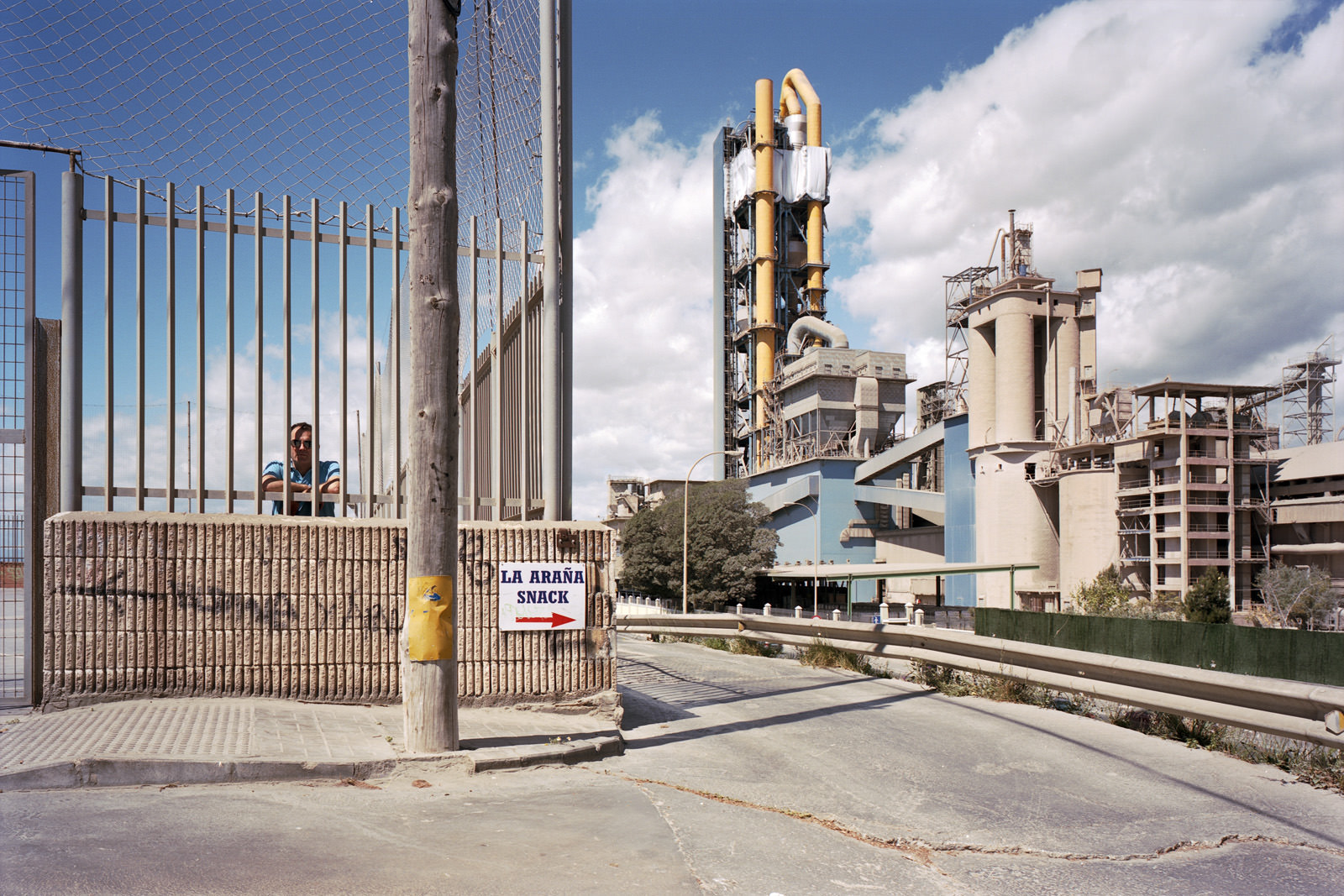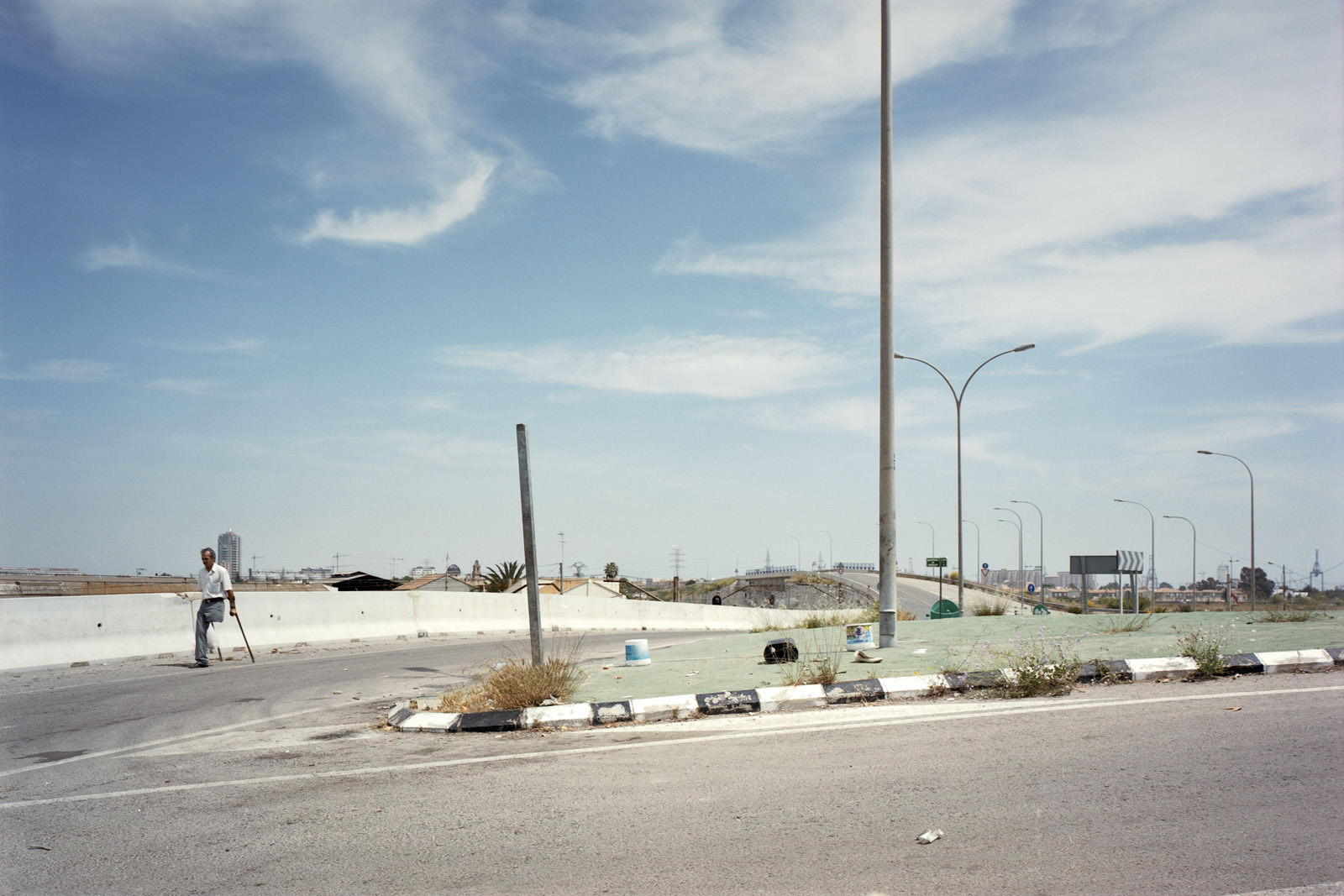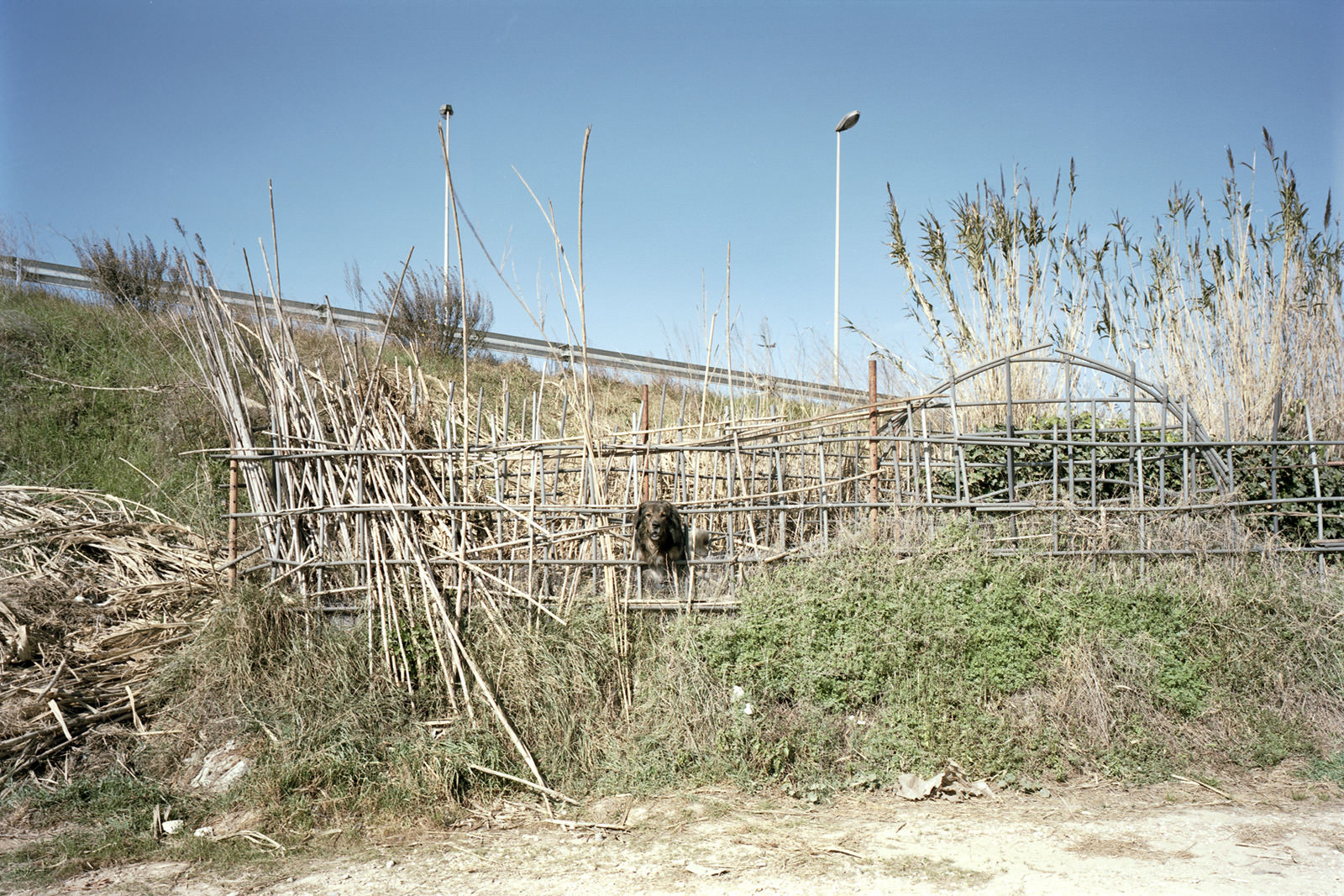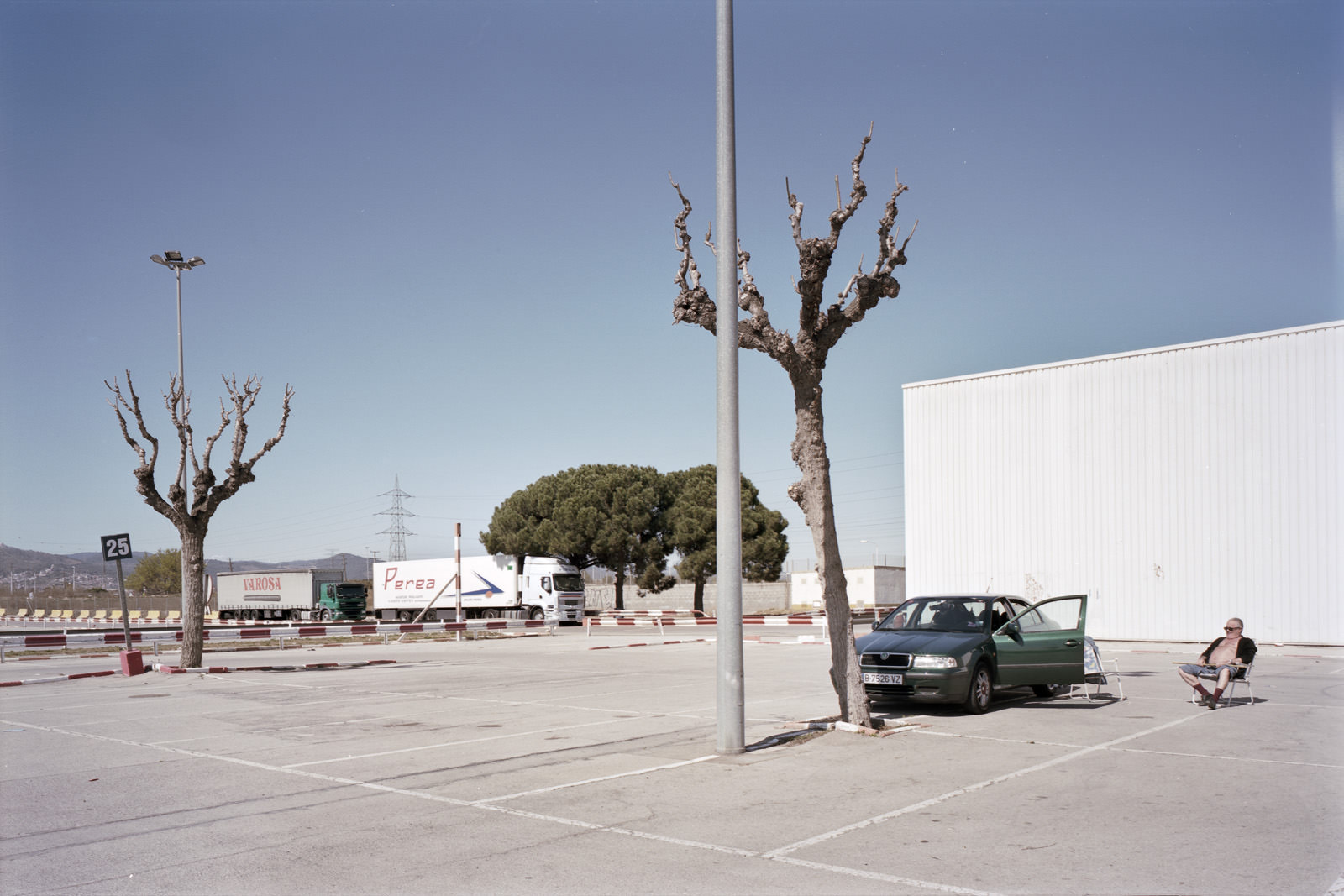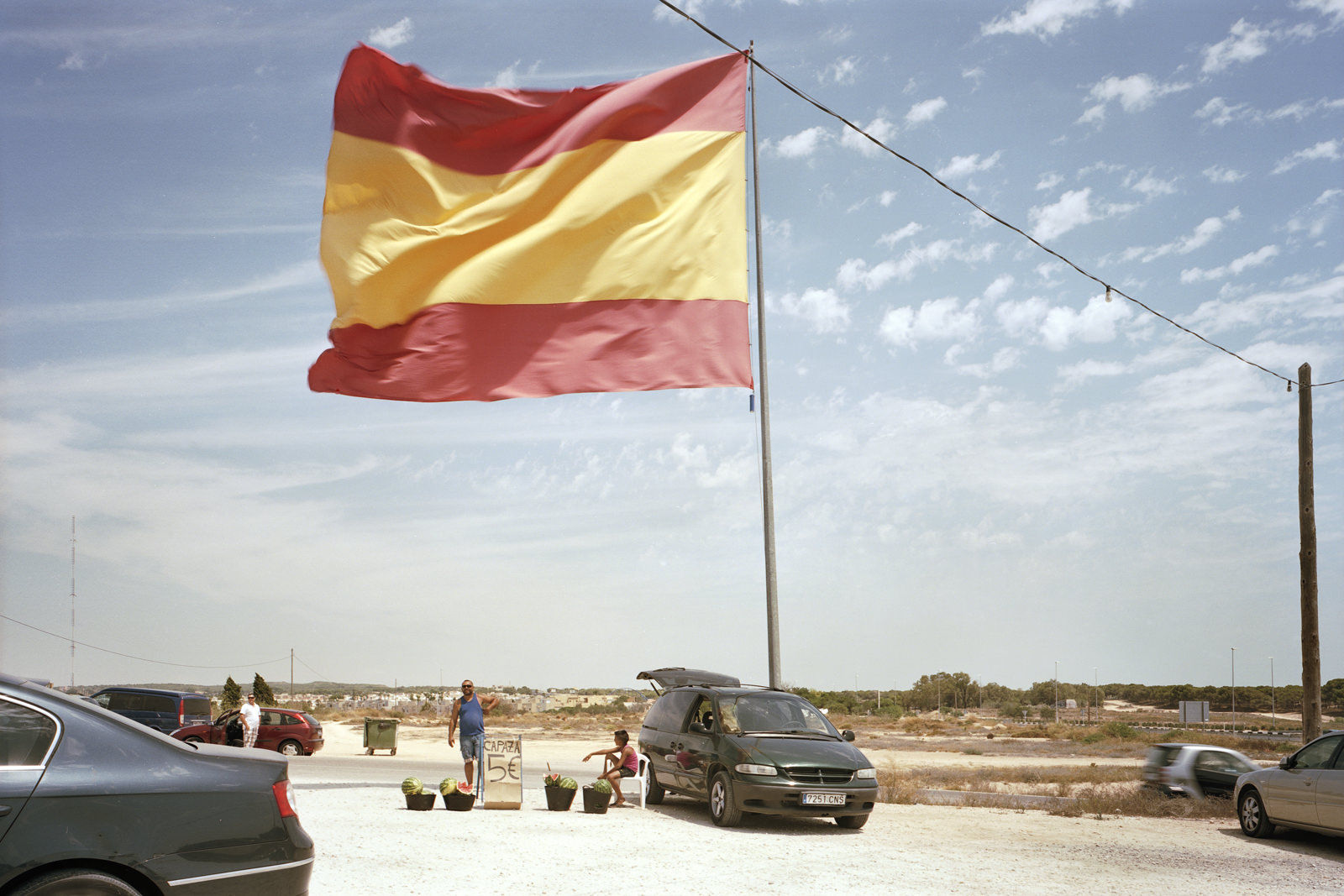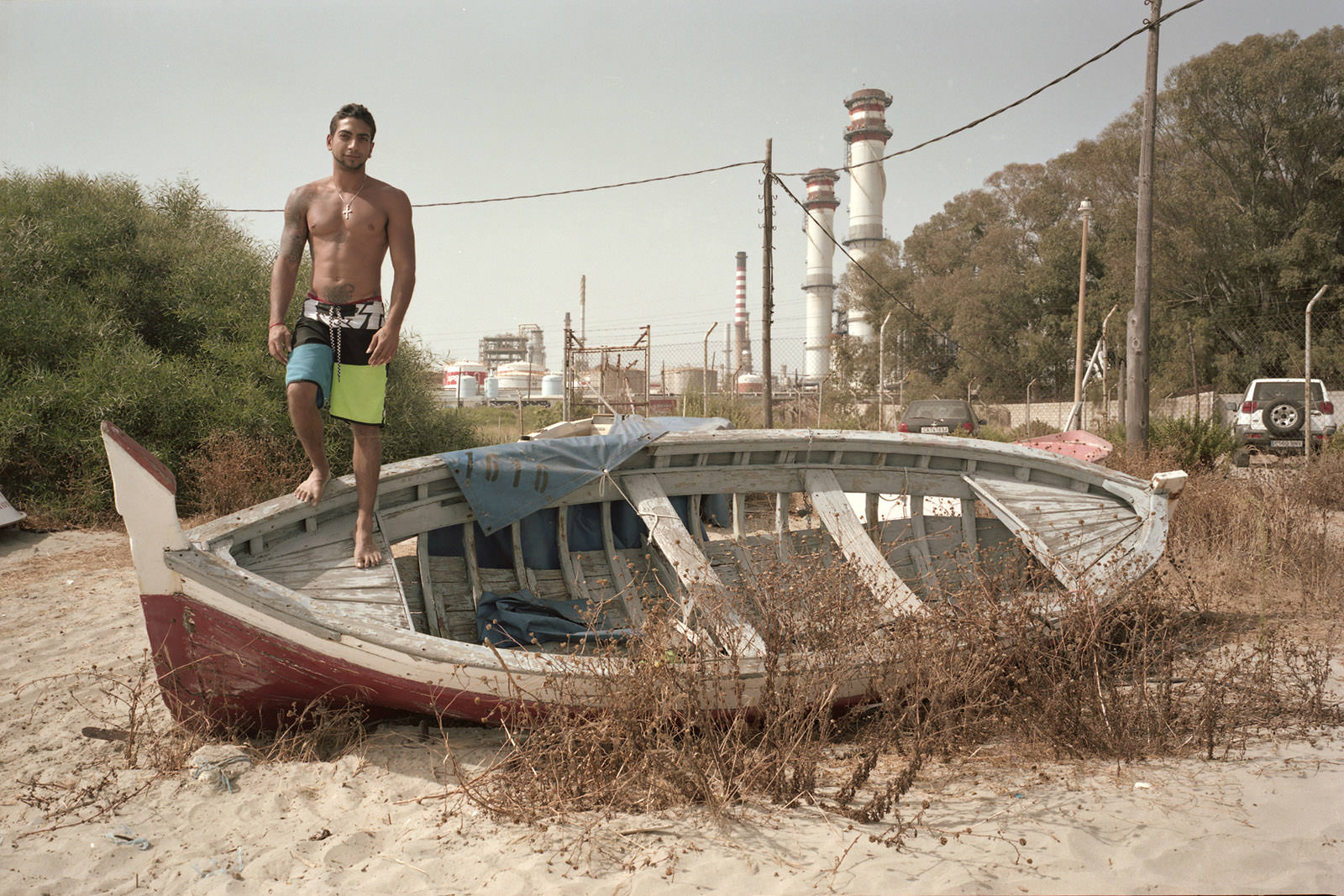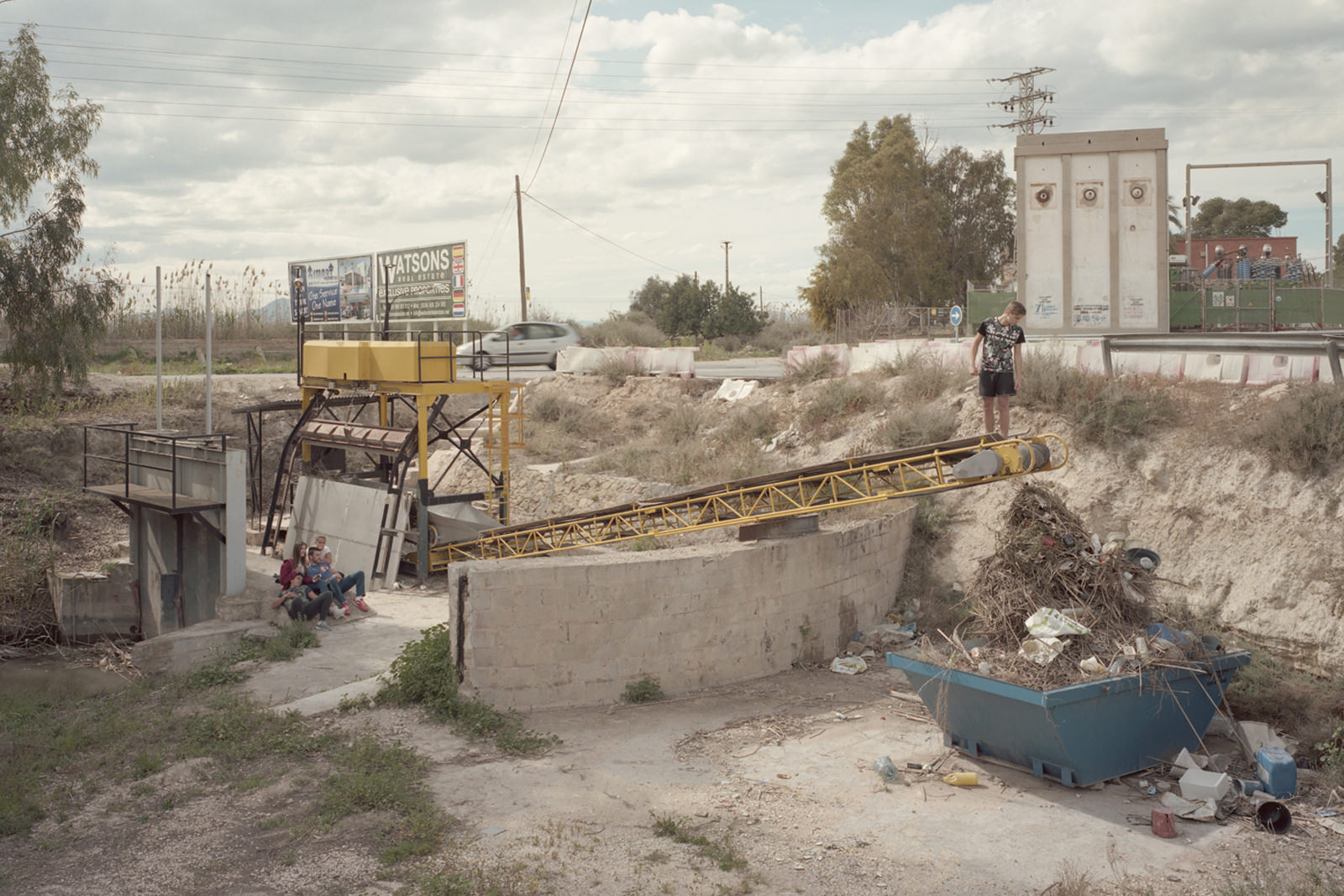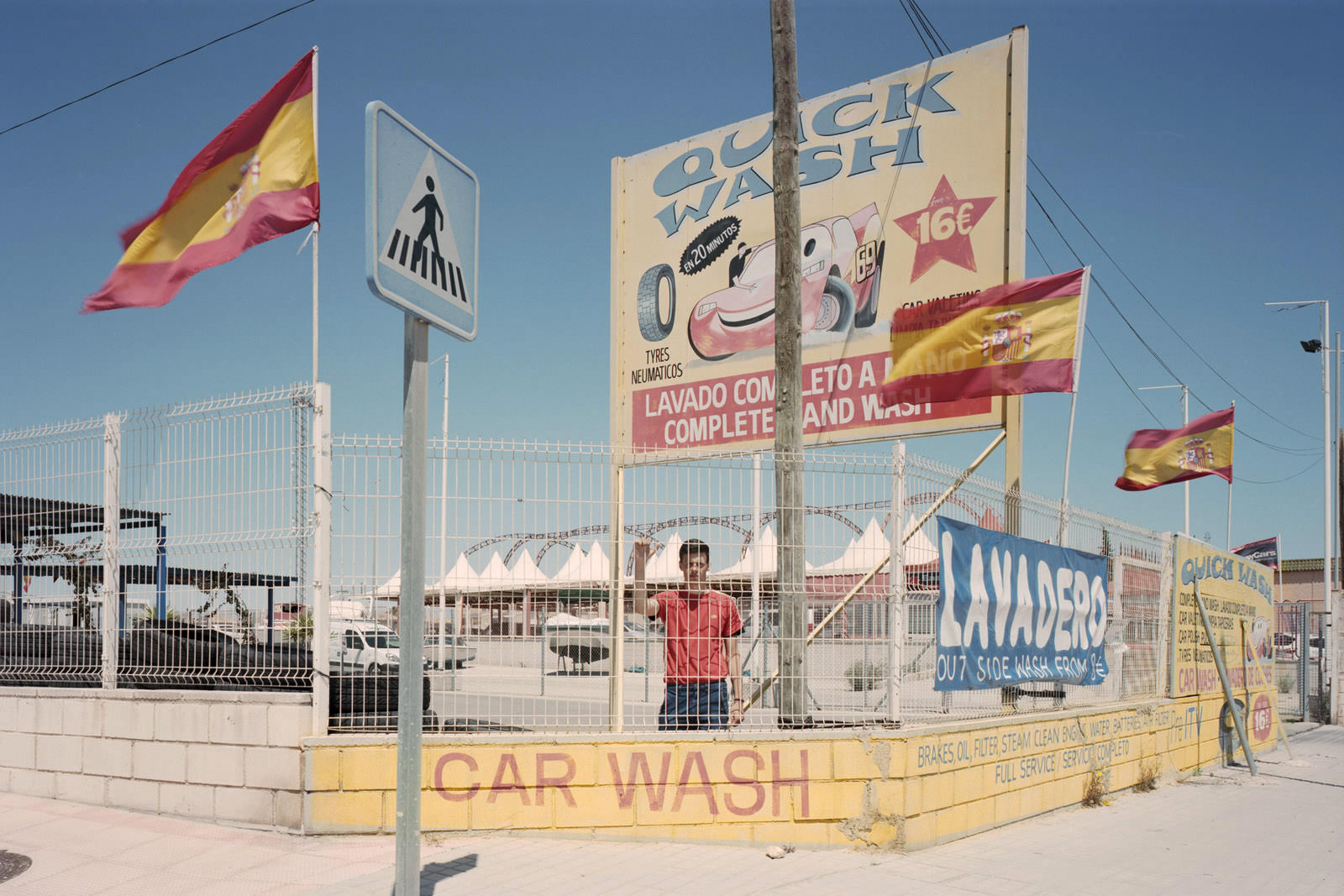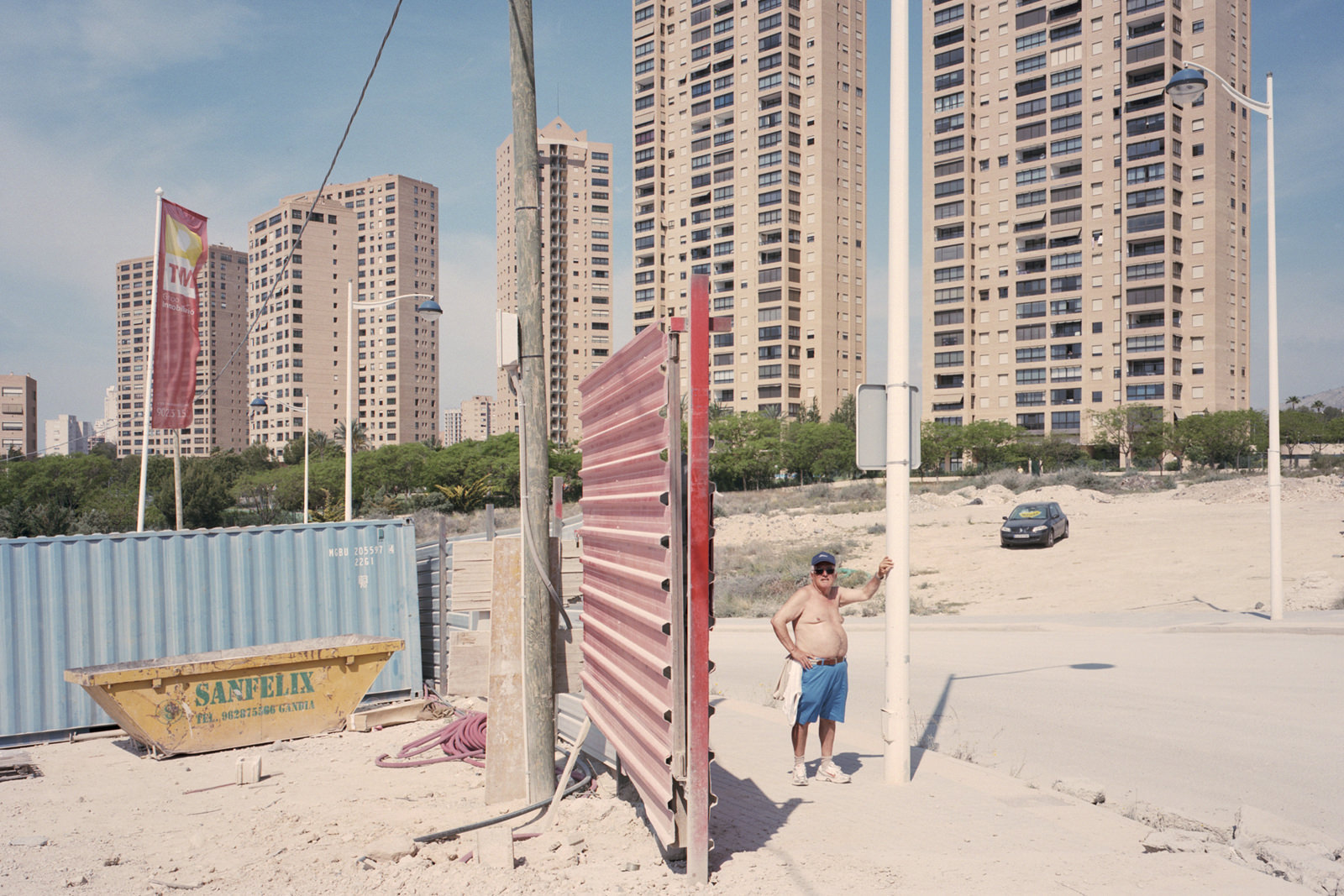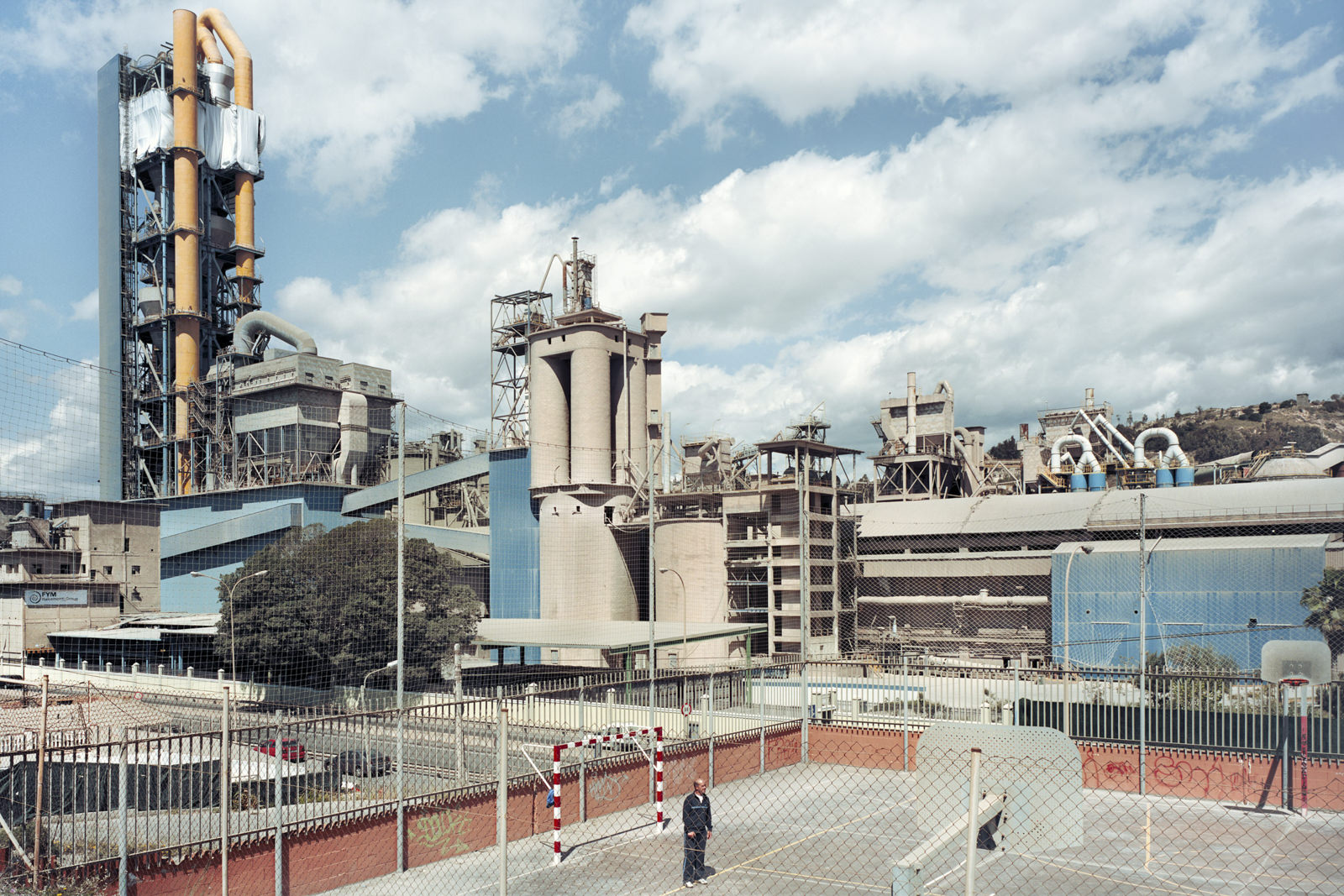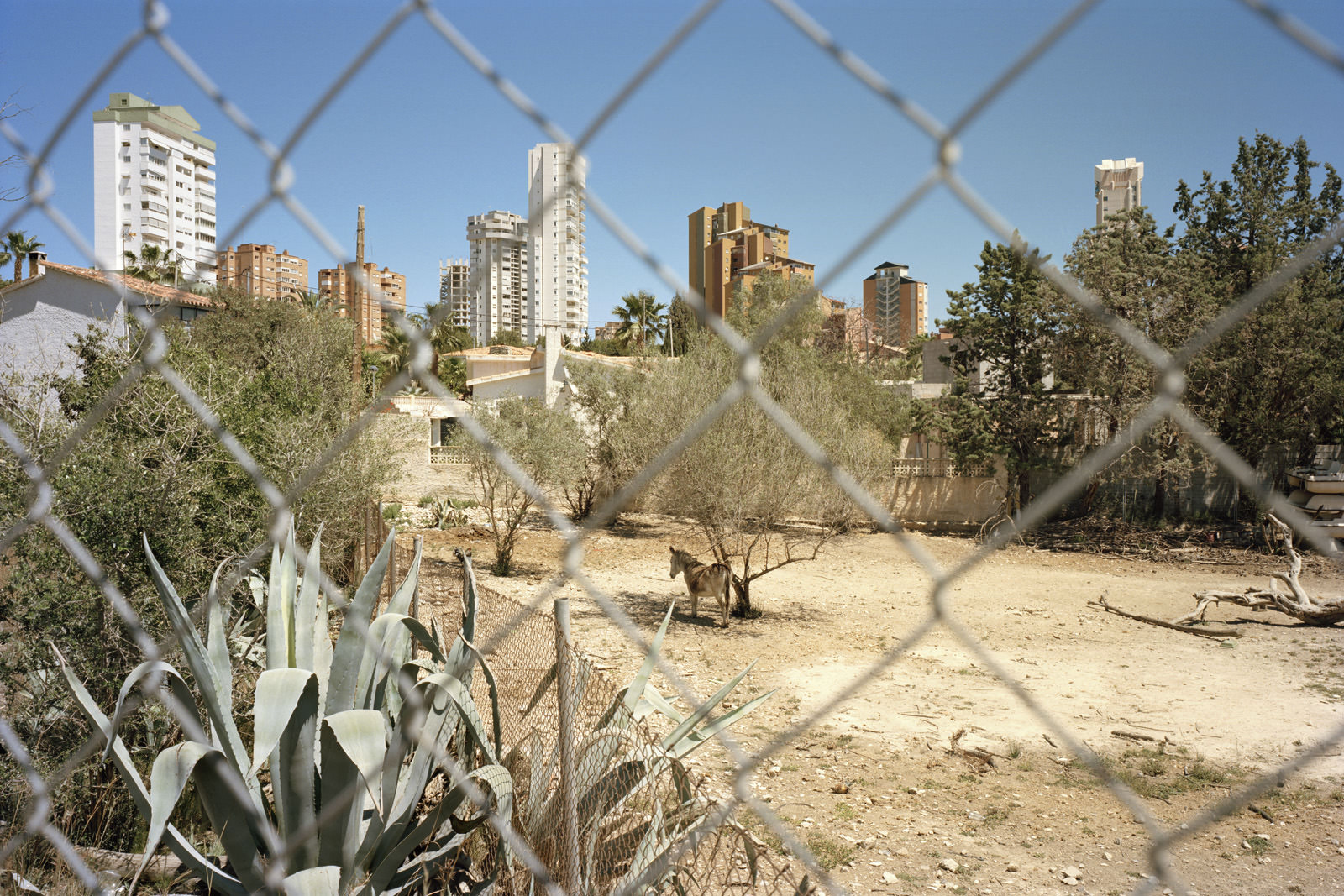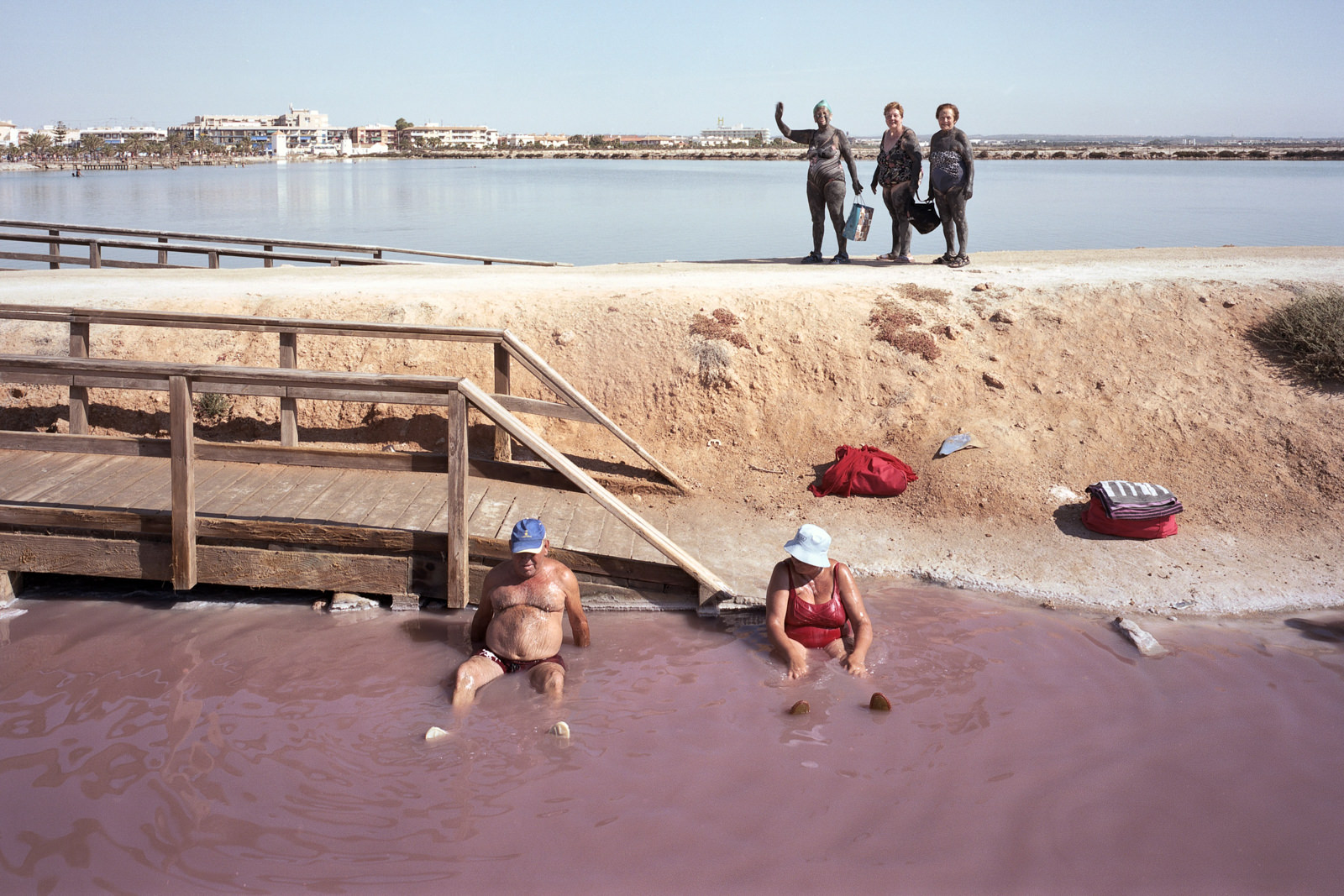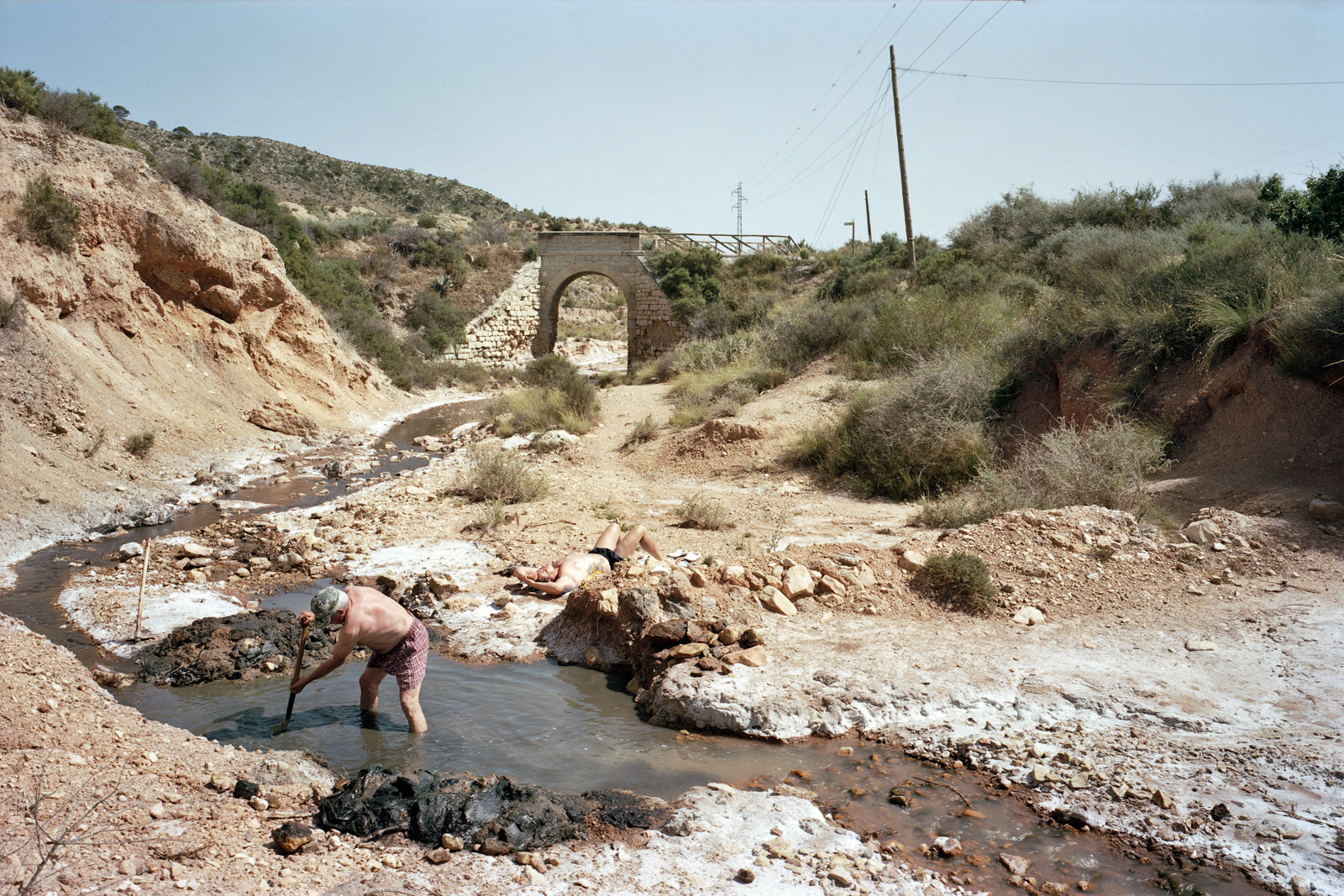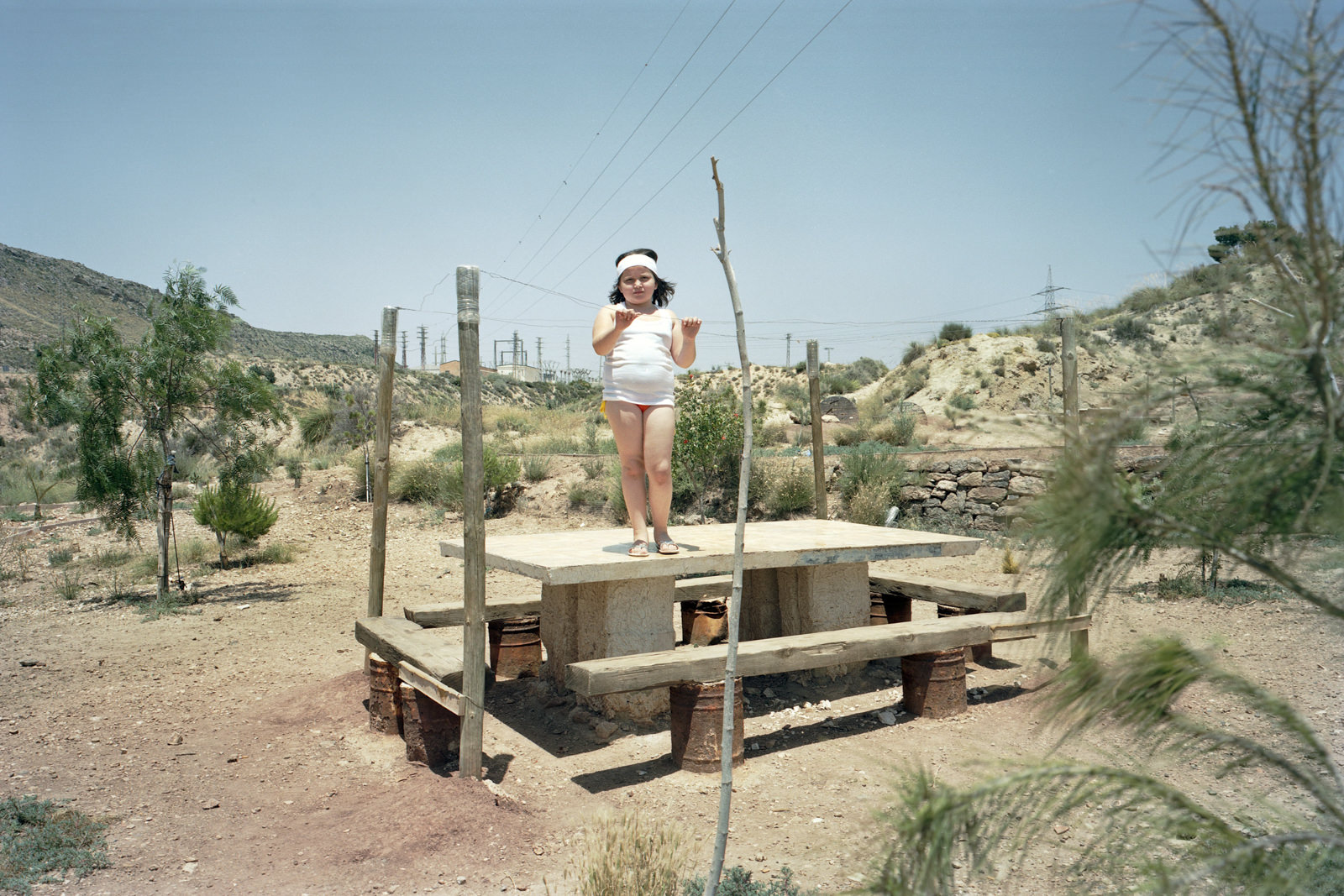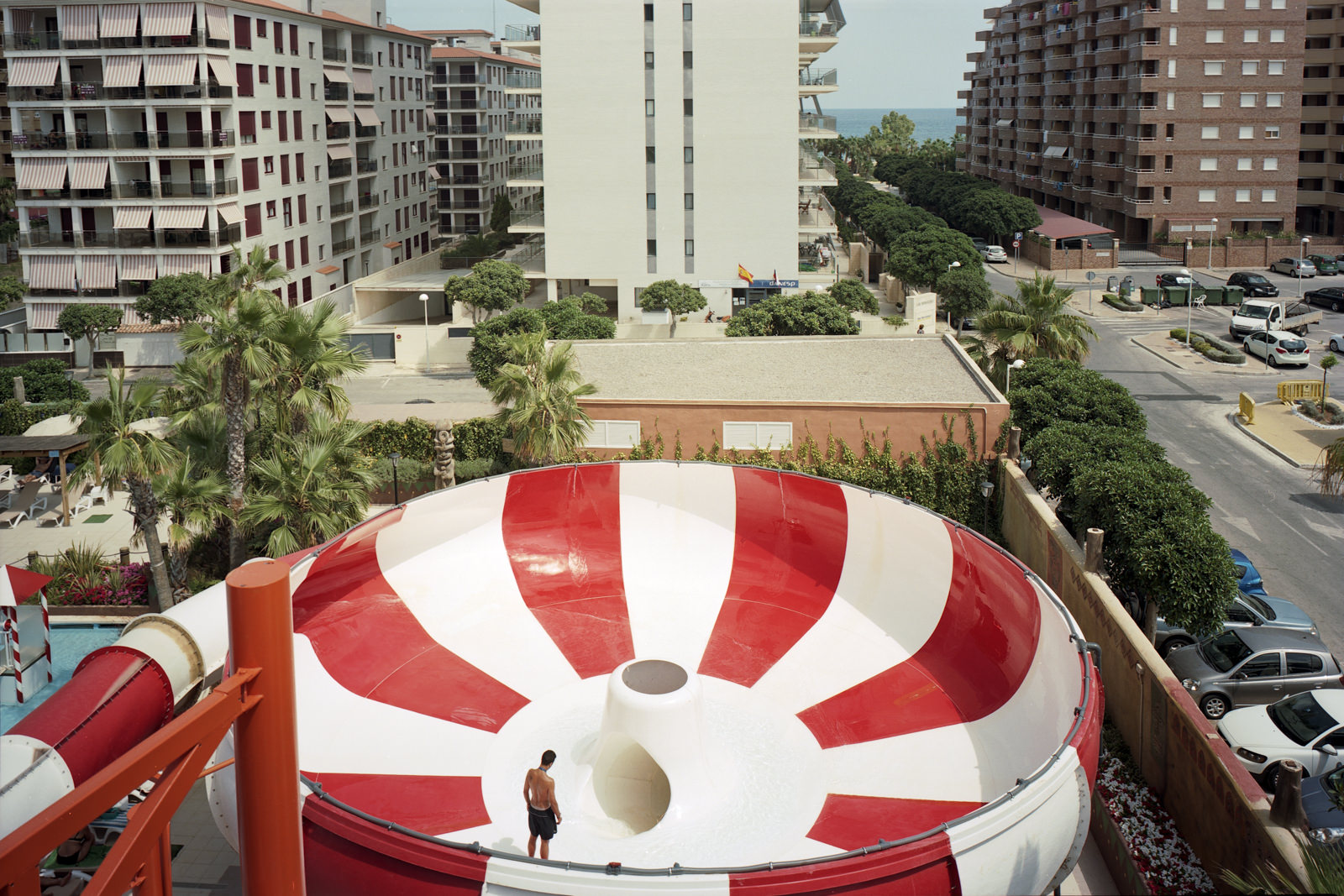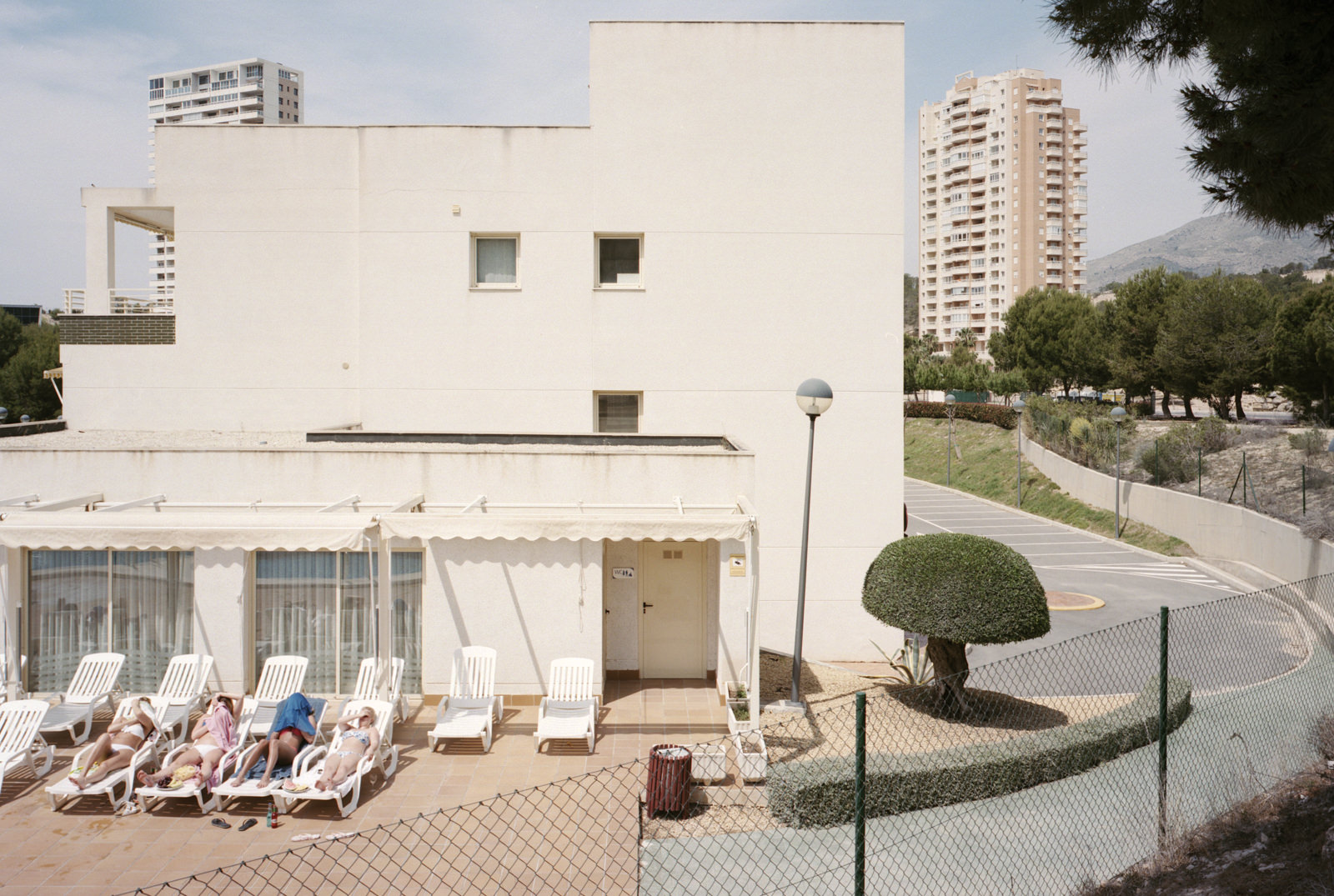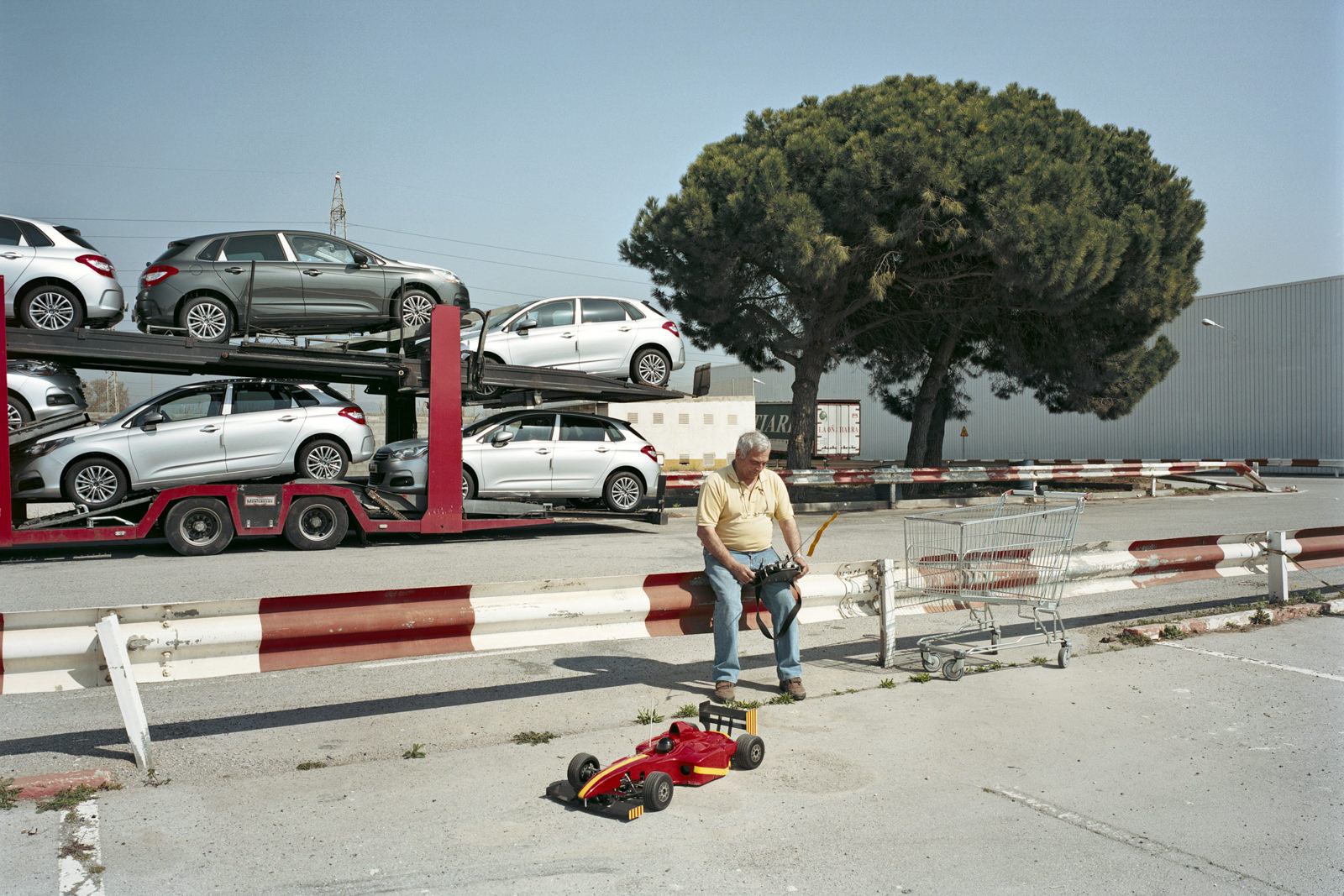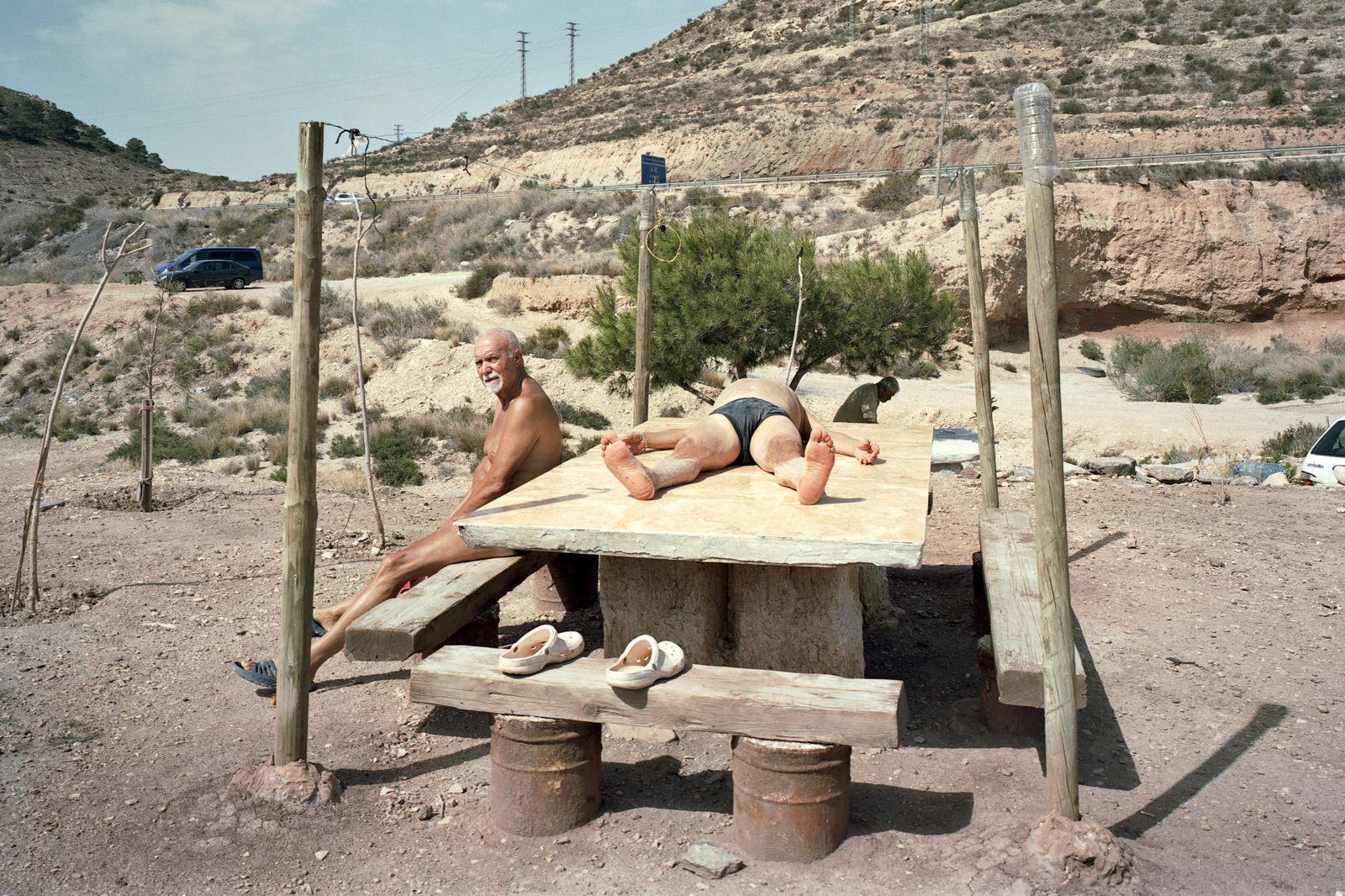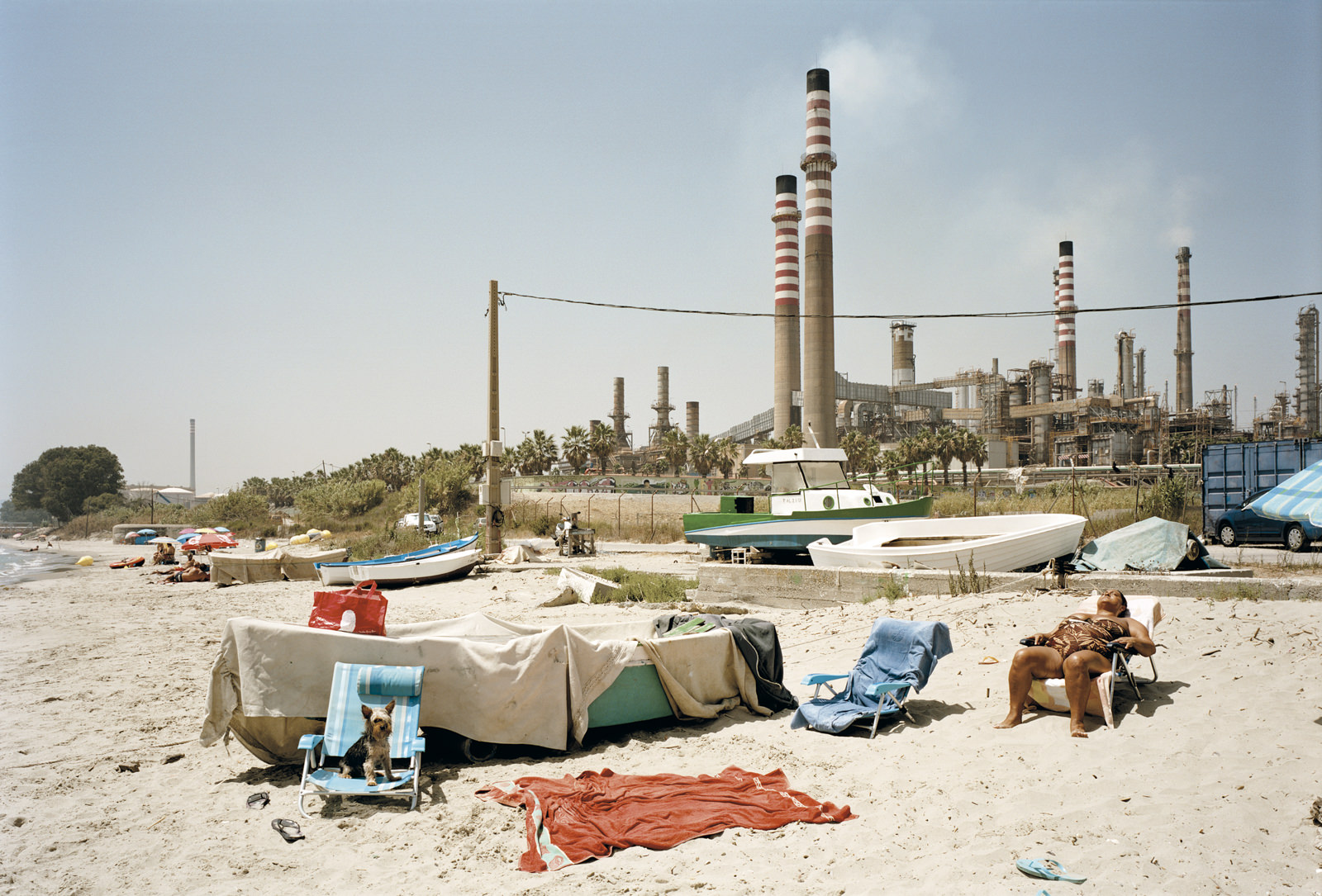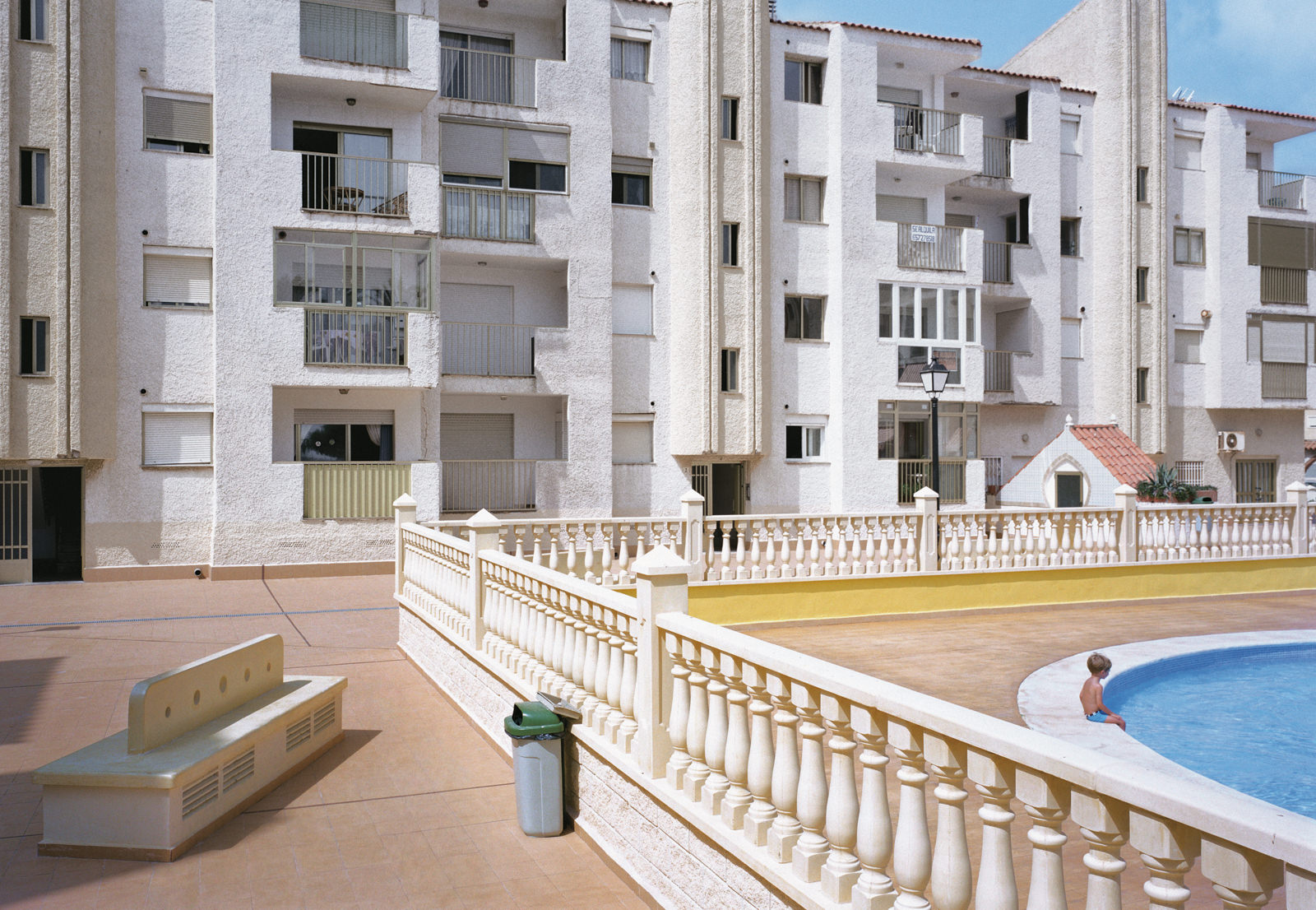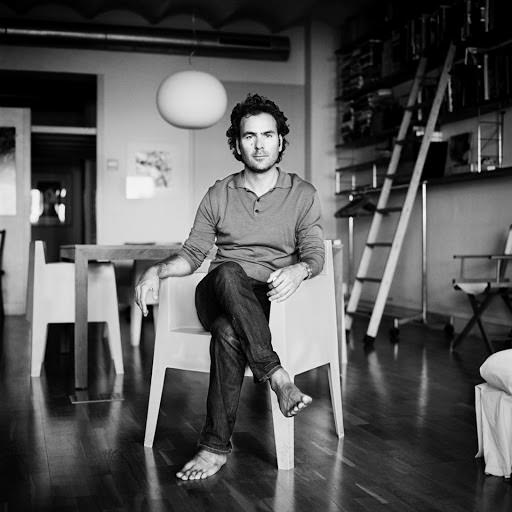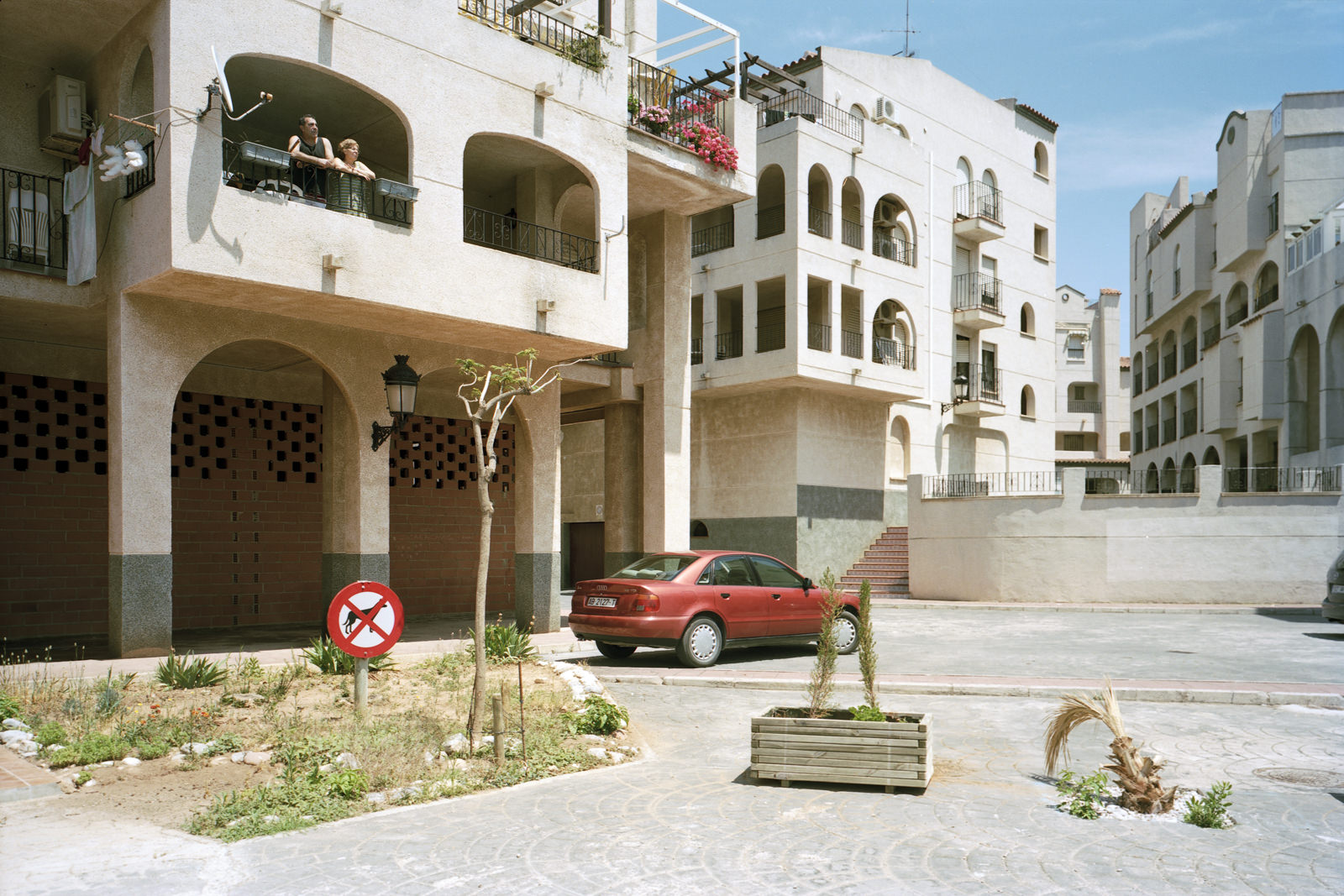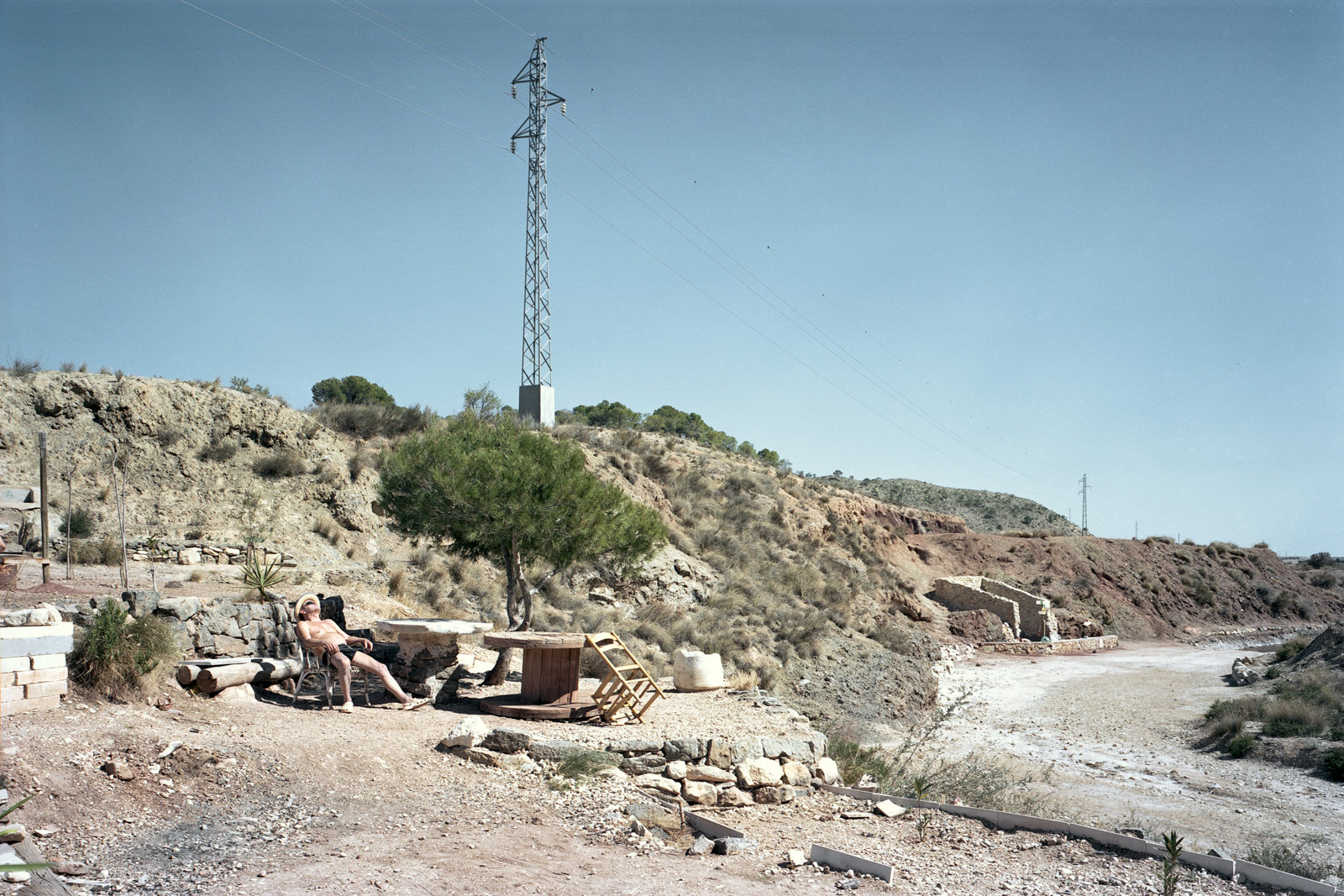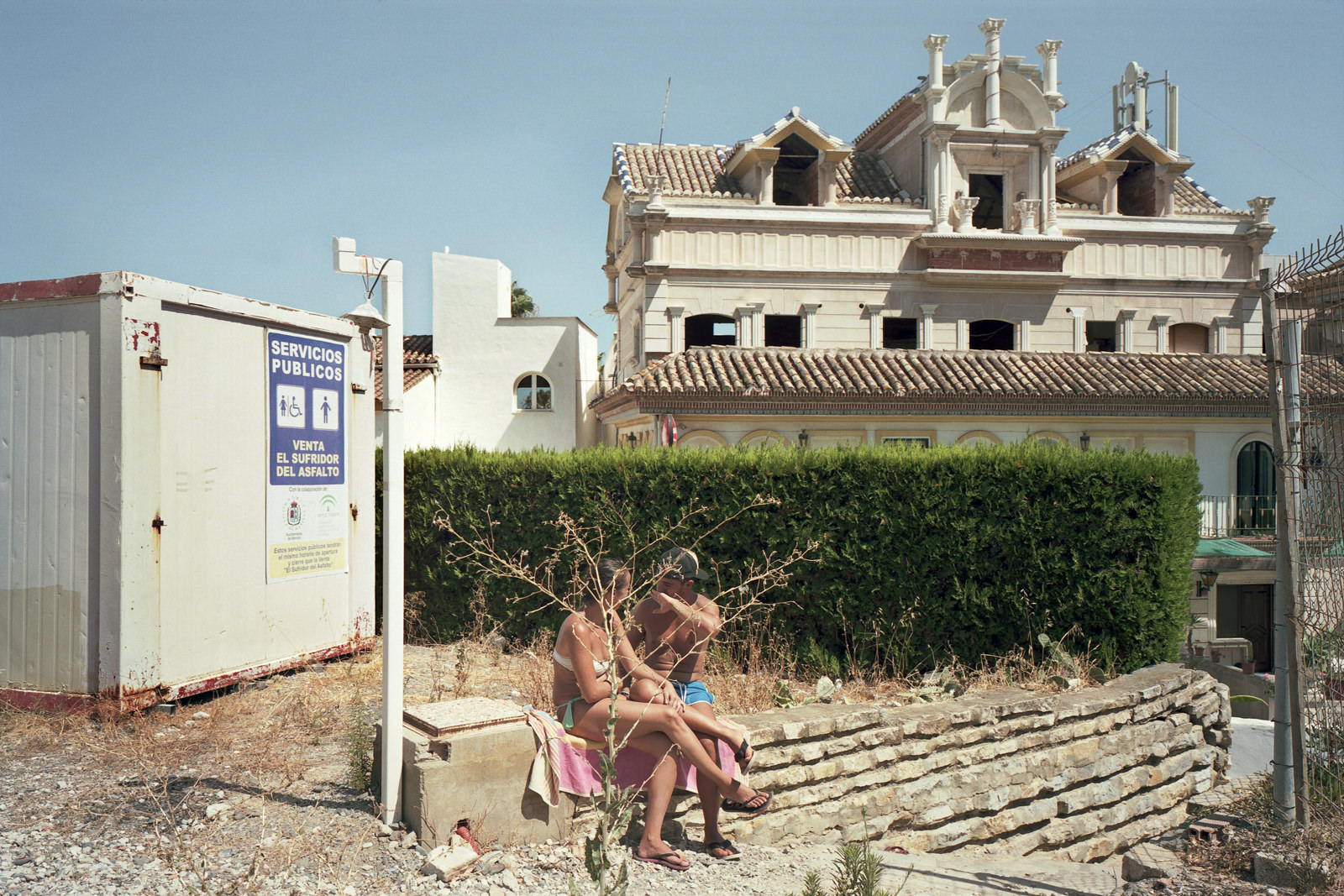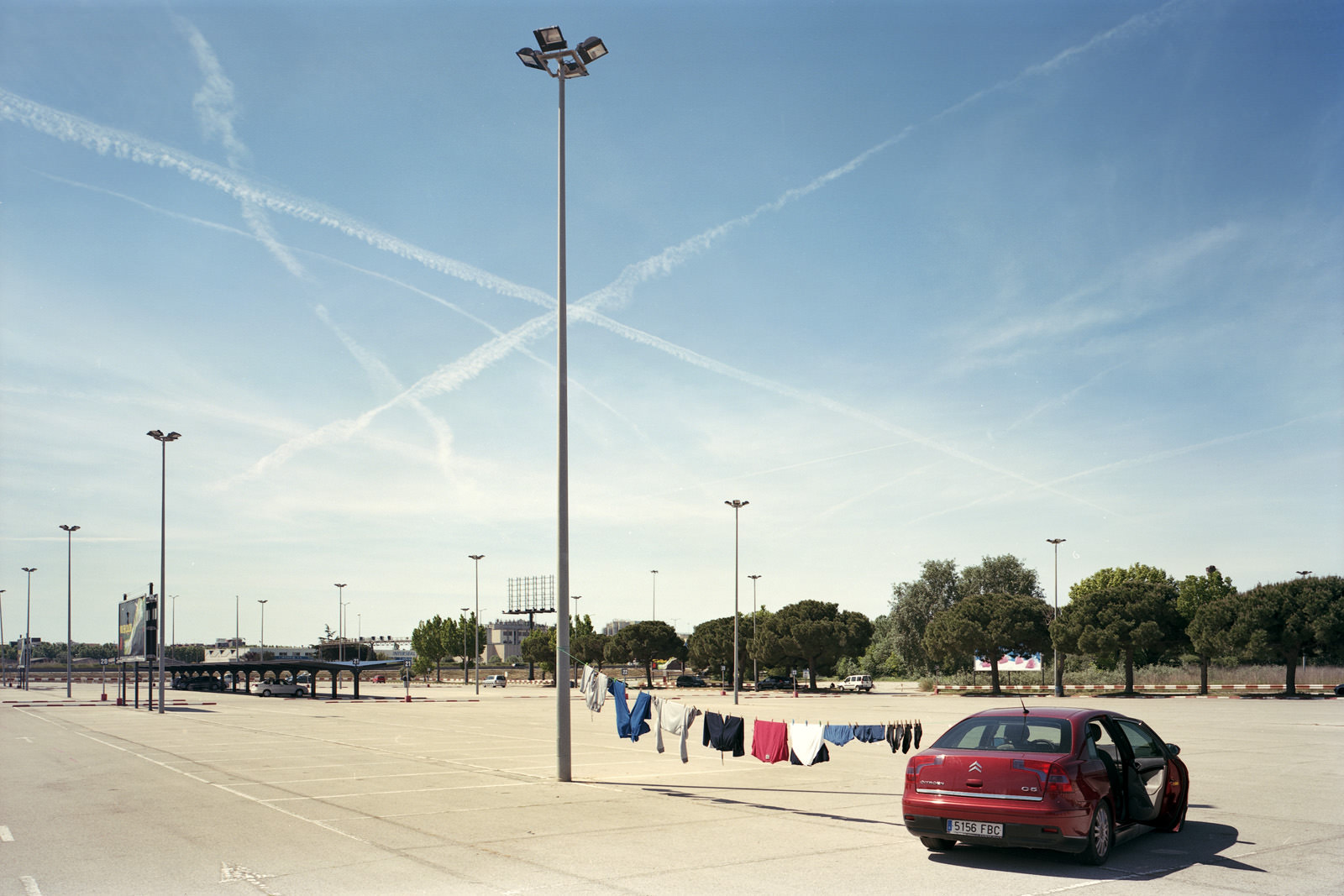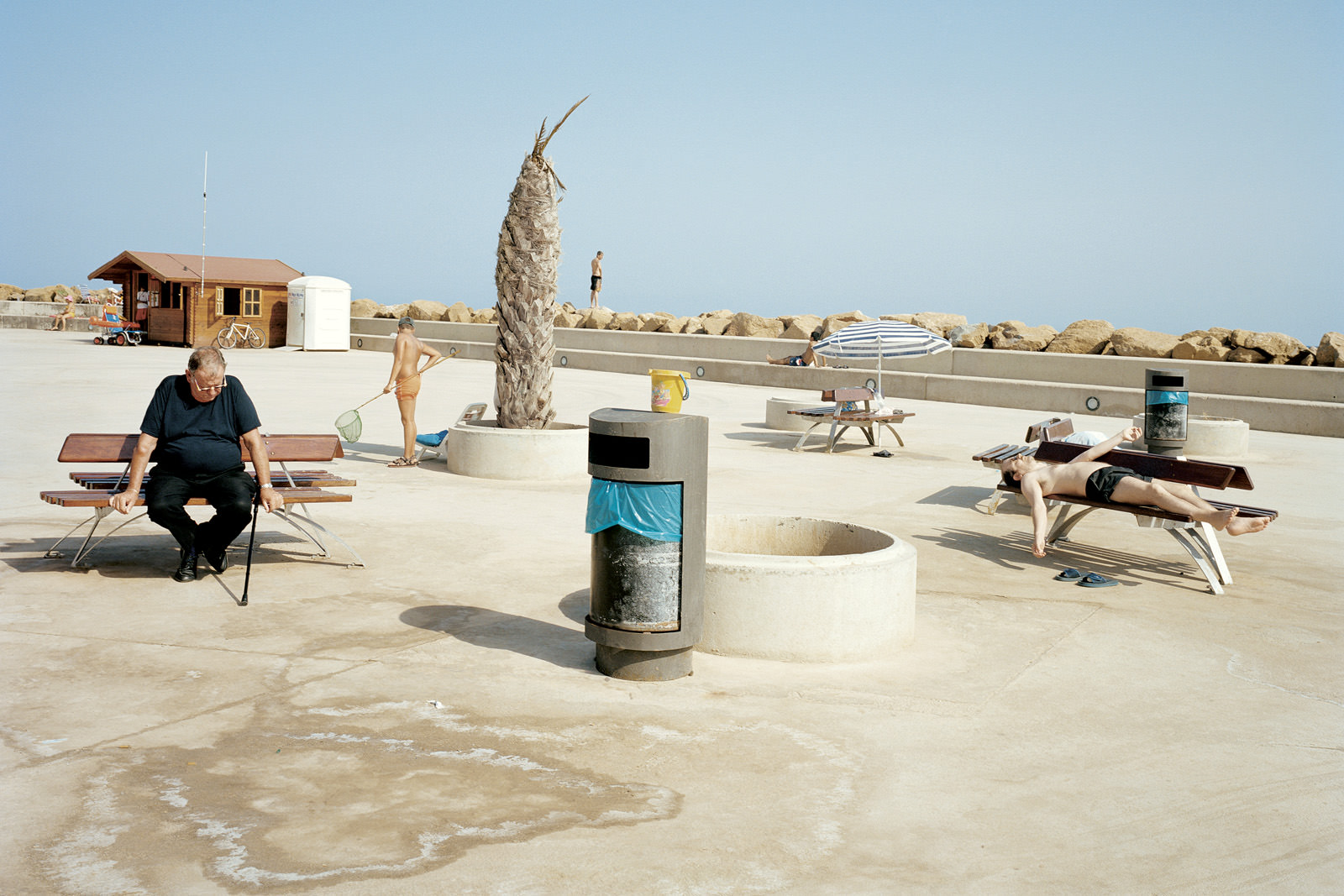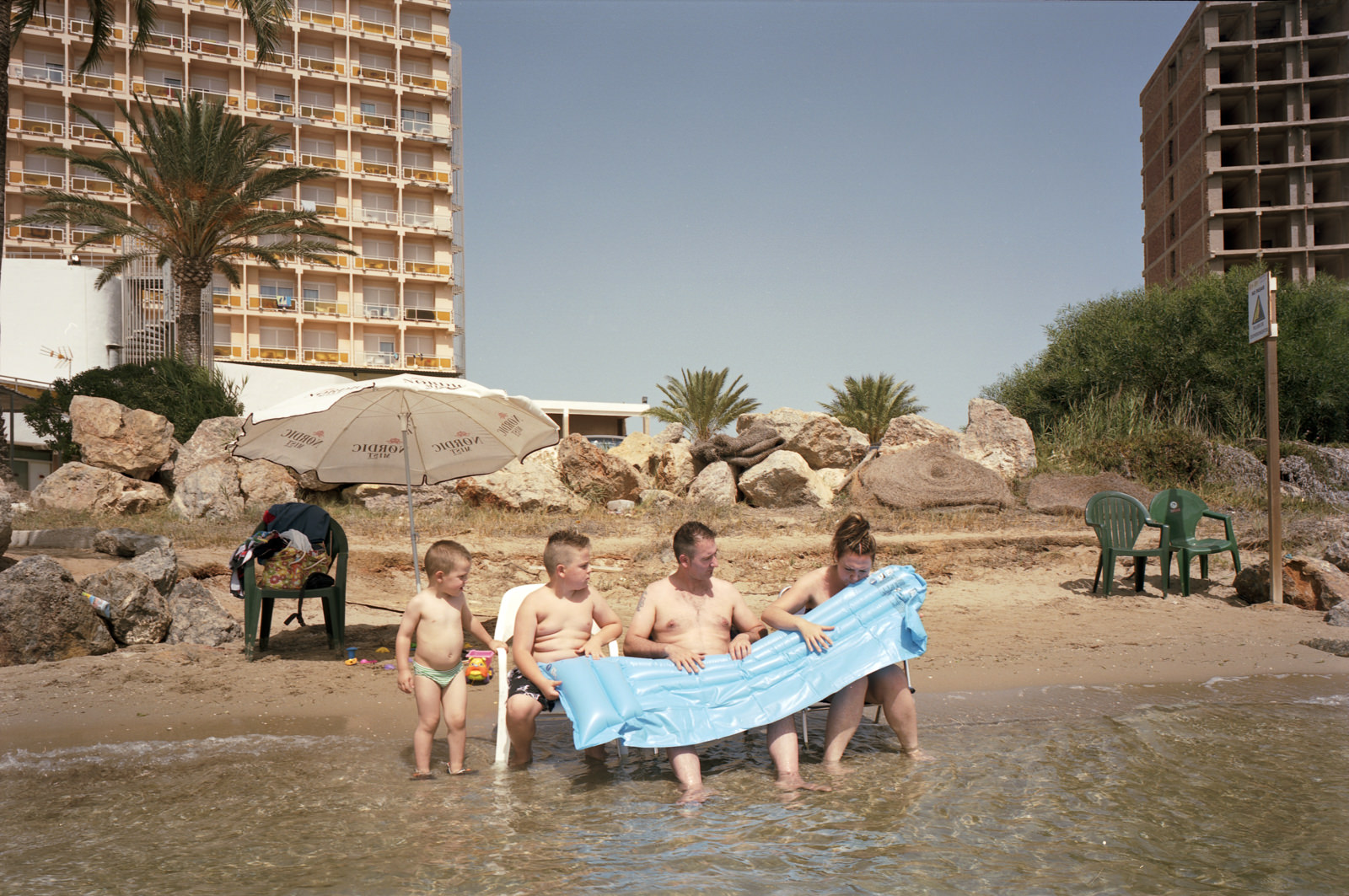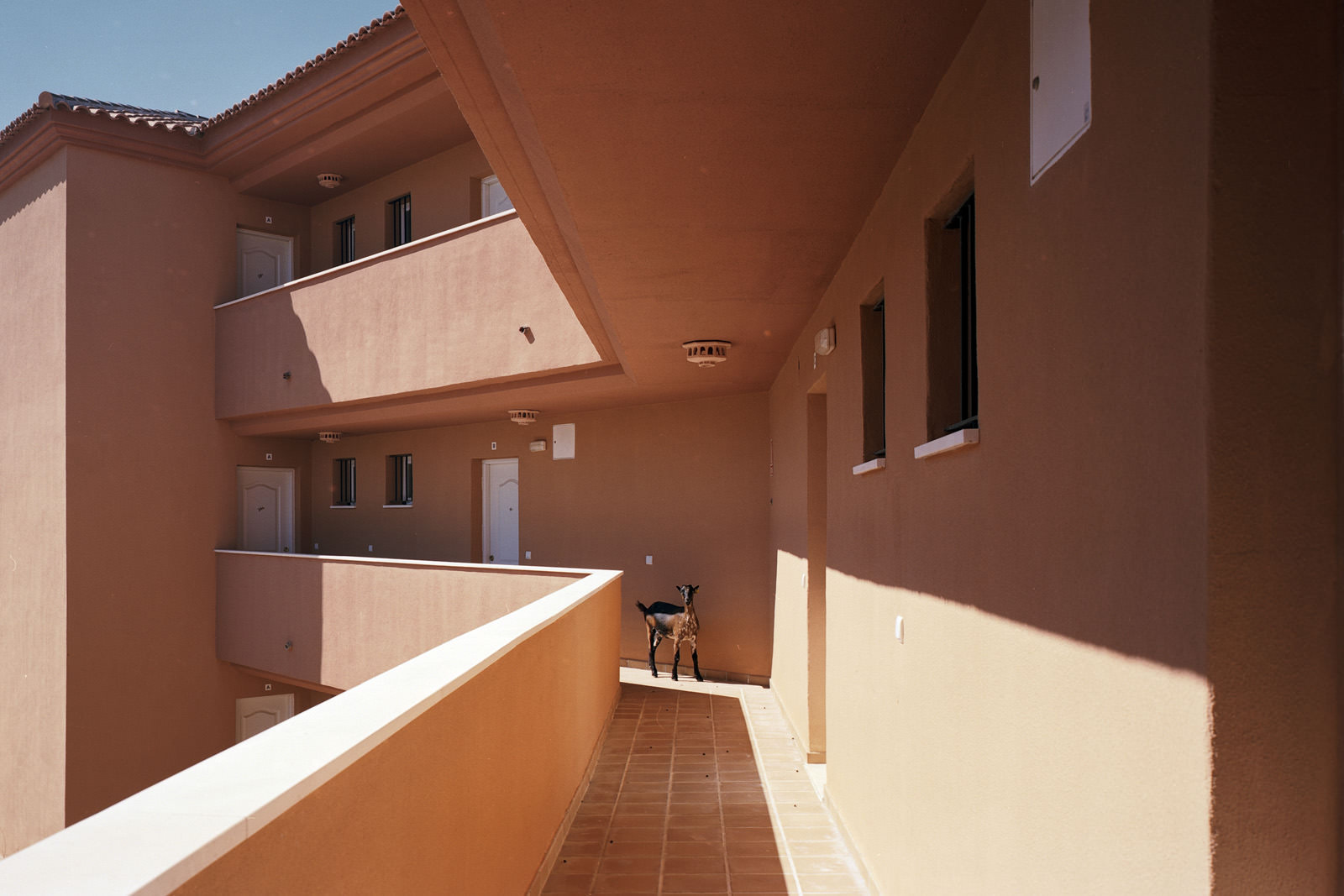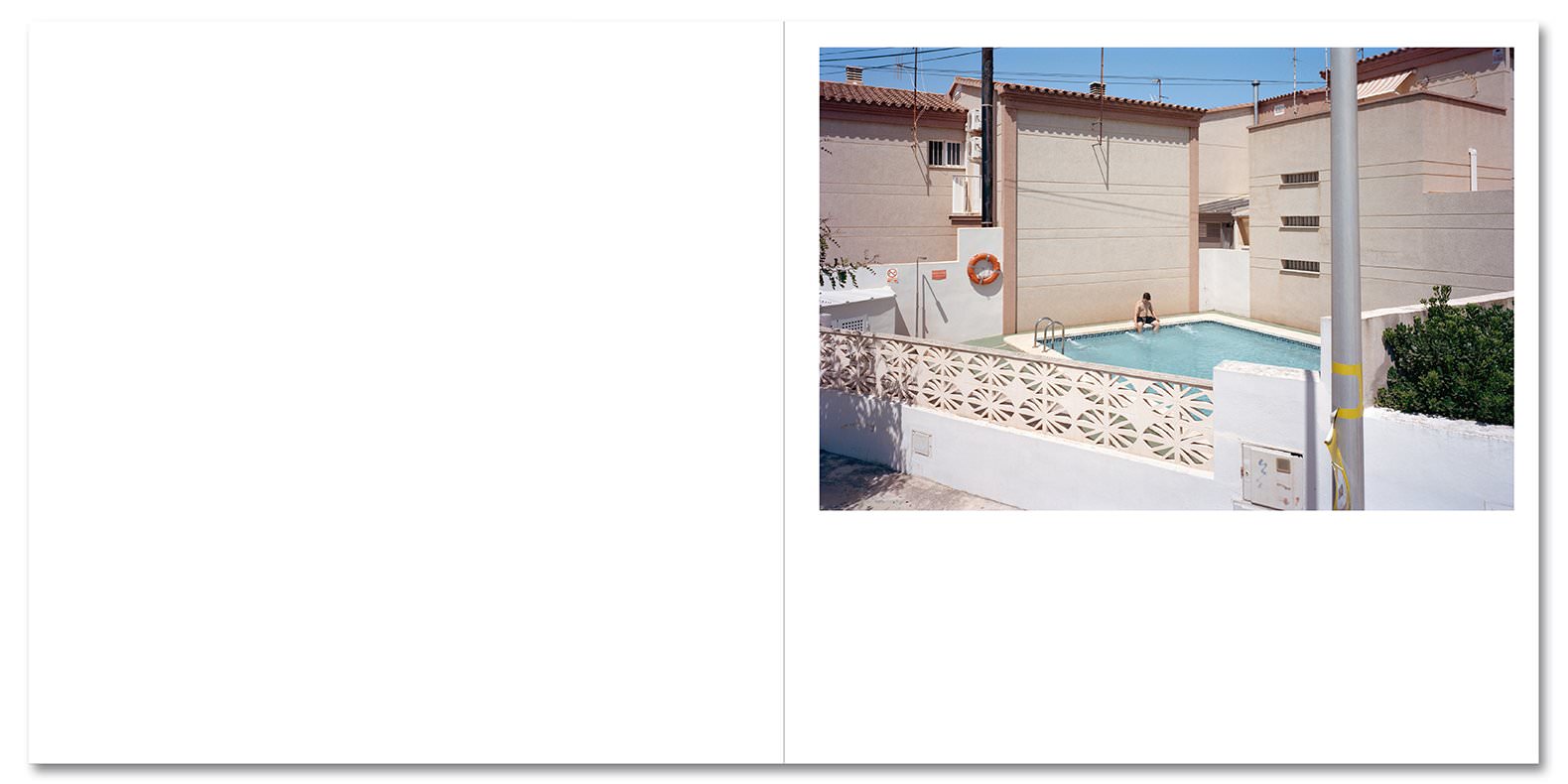Txema Salvans: Perfect Day
Txema Salvans: Perfect Day
In “Perfect Day”, Txema Salvans photographs Spain’s holiday-makers in unexpected corners of the postindustrial landscape. Sunbathers congregate in car parks, swimming pools are nestled between encroaching buildings, and cranes and cooling towers loom over beaches. In these surreal, banal, and humorous scenes, Salvans reveals how the pursuit of leisure persists in spite of the ominous pressures of the built environment, expressing a deeply human determination to adapt and find repose, against the odds.
Although many of these photographs were made near the sea, the sea itself remains invisible: a silent, implicit witness and a backcloth that has been inverted. Instead, we see – in a literal sense – what the images’ subjects want to turn their back on. Beneath the surface of these scrupulously composed tableaux are potent questions about class, national identity, and the politics of space: a depiction of simple pleasures advocating our rights to them.
“While popular culture beguiles us with the myth of an untamed nature in which to get away from the frustrations of our daily lives, our most habitual experience keeps us tied either to mass tourism or to fleeting escapes to places that are simply what is left of the landscape: vestiges of what was once countryside, now overrun by industry, housing developments, and superstores. Appropriated out of necessity and transformed through sheer resilience, these places have been rescued from their inhospitable dimension to become plausible options in which we can still enjoy a bit of free time in the sunshine, well away from the bustle of the city. It is precisely these sites of leisure in post-industrial society that interest Txema Salvans, whose shots of them bring out all their surreal banality and sharpen the funny sense of strangeness they engender. He does this by means of two rhetorical devices. First, by maintaining a viewpoint distanced enough to prioritize the scene and its surrounding environment over the individual subjects and their expressions, and secondly, and most importantly, through the mechanism of ellipsis. Most of the pictures were taken on the beach or near the sea, and the sea is therefore what justifies the presence of people swimming, fishing, or playing on the sand. And yet the sea is always invisible, because Salvans positions himself between the water and the characters, reversing the direction of their gaze. As a result, what the camera shows us is the degraded prospect that the characters want to turn their backs on. To turn one’s back on something is to ignore it, even to pretend that it does not exist.
Salvans’s work speaks to us, then, of this collective delusion that leads us to fantasize about these transient scraps of paradise. Since we have no way of knowing if any other paradise is possible, we content ourselves with these moments of tranquillity and even happiness amidst the concrete and the factories. But it also speaks to us of a paradox in the politics of seeing. The paradox is that we viewers-of-the-photographs are denied the chance to see what the actors-in-the-photographs want to see, while what is rubbed in our eyes instead is what they do not want to see. It is Salvans who manages the instances of that dialectic and in doing so demonstrates, as Nietzsche held, that there are no facts, only interpretations.” (Text from Joan Foncuberta)
About the Author
Txema Salvans, Barcelona 1971, is a Catalan documentary photographer. He studied photography and biology at the same time.
As a photographer, he studied at the prestigious ICP in New York thanks to a scholarship from which he made the leap to Fabrica, the center for the artistic creation of Benetton. In 1997, at the age of 26, he was awarded the first FotoPres prize for two of his works: “History of Juan Durvan”, the daily life of a blind man, and “Vivan los novios”, where Salvans infiltrates several weddings with commercial photographers to show other nuances and the more ironic side of the wedding ceremony. Salvans chose photography as one of the most intense ways to look at and live everyday life. Taking photos is also a great way to interact with people, something that you consider necessary to breathe. Likewise, the act of photographing is a way of achieving happiness.
In recent years, Salvans has been looking for the leisure scene in the post-industrial society of the Mediterranean coast with his large-format camera to emphasize his surreal banality.
The magnetism of his work is anchored to two rhetorical resources: the definition of the priorities of the scene and its environment with respect to the characters and, above all, the use of ellipses. With his photographic lens, he manages to capture the nature of everyday life, so that the viewer is familiar.
All his works are characterized by the teaching of the nuances of our society from an ironic and reflective point of view, resulting in an accurate vision of everyday scenes, against which others would prefer to look the other way. Txema Salvans has collaborated with magazines around the world such as Le Monde, New York Times, Esquire, Suddeutsche Zeitung, Stern, NZZ, Liberation, GQ, Monocle, Colors, among others.

